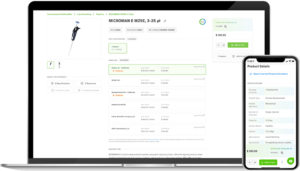Best Practices for Biotech Startup Fundraising

Fundraising is a necessary but often challenging and generally opaque part of the biotech startup growth process. How do you get in touch with investors? How do you engage them once contact has been made? How do you pitch them effectively? How do you cultivate investor relationships and convert them to that coveted term sheet?
Being a former venture capital investor myself, I was thrilled to be able to share my insights from the other side of the table. Here are our top tips for fundraising.
Getting in Touch with Investors
For investors you have not met, try to get a warm intro, especially from someone who can speak to your character and ability. Instead of finding just any mutual LinkedIn connection, look for people who know you and your team well and can speak to your differentiated strengths and potential as leaders. Added votes of confidence from the person warm introducing your team can go a long way, especially as investors you have not met try to get comfortable around investing.
Try to get warm intros from other founders. Investors generally always take warm intros from their own portfolio so find ways to connect with other founders who you know well and who can vouch for you to their own cap table. This is usually a better tactic than getting introductions from investors or non-portfolio founders.
Make it as easy as possible for people to provide warm introductions. Include an overview that they can easily share with your investor(s) of interest, including highlights of your business, opportunity, traction, and team as well as a thoughtful level of personalization on why the investor in question is a particular fit (name past investments that show their fund’s alignment with your work, for example).
Target more junior people when cold emailing. Junior team members at venture capital funds are generally more receptive to cold emails. Even though they may not have the ultimate check writing ability, if they feel strongly about your business, they can be instrumental internal advocates on your behalf.
Personalize each message. People are generally much more responsive to personalized emails showing you took the time to get to know them personally and their firm and why they may be especially aligned with your work. Take the time to add a few lines of personalization and try not to use mail merge (or at least try not to make it obvious you did).

Engaging with Investors
Start by stating clearly and simply what you are doing. Too often, founders start by setting the stage and describing their perspective on macro trends, which can create more confusion and disagreement with investors (who often have strongly held views about macro trends) before you even get to what you are building.
In the early stage, focus on the big idea. Too often, founders feel like the need to arm themselves with data and all the nitty gritty details around actually building their business from the scientific details to the financial projections to the supply chain and more. Of course, this is crucial to know and plan when actually running the business, but investors are more excited about the long term, big picture vision. They are in the business of investing in dreams and a better future. Focus more on the “so what” rather than the “what.”
Answer the “why now.” Investors take timing very seriously. The right idea at the wrong time leads to a bad investment. Include a slide articulating why the macro factors from culture to technology to regulation make the current timing perfect.
Figure out where the investor hesitations are. If an investor initially passes on your pitch, ask them what they would need to see or know to get comfortable with investing. Perhaps they are looking for certain traction levels or the addition of particular team members. Then, ask if you can add them to your investor update newsletter (investors will usually say yes as this is a common practice and a very low friction ask). In this way, you can keep the relationship warm and thoughtfully show them how you have incorporated their feedback.
One common mistake in presentations is not showing where the exit has been or can be. Paint a clear picture on your ultimate opportunity.
Write a thoughtful and engaging email highlighting business growth and opportunity. Instead of a simple “just checking in” email, craft a concise but informative email sharing impressive growth metrics since you last met, strategic pivots, and how you see your business positioned well to weather or even grow further during COVID-19.
When investors ask how they can help, take them up on it. Specifically, ask for intros to other funds, their perspective on other funds and ones that may be a particular fit, insight around benchmarking and key metrics to aim for, feedback on your pitch and deck, and feedback on your product.
Offer reference checks. Especially during the remote COVID world, investors are focusing more on what they know and their core circles of competency and have higher bars both in founder and business quality when making investment decisions. To help investors get comfortable around you and your team, offer to provide multiple reference checks.
Keep these tips in mind as you are building and cultivating investor relationships for a successful fundraising round!


